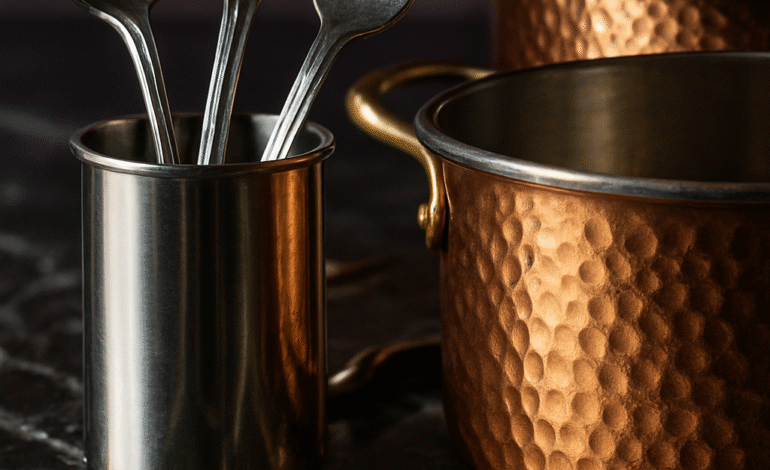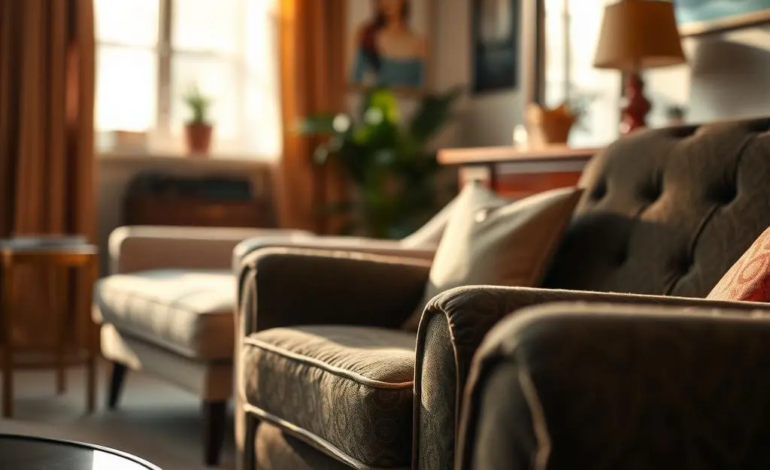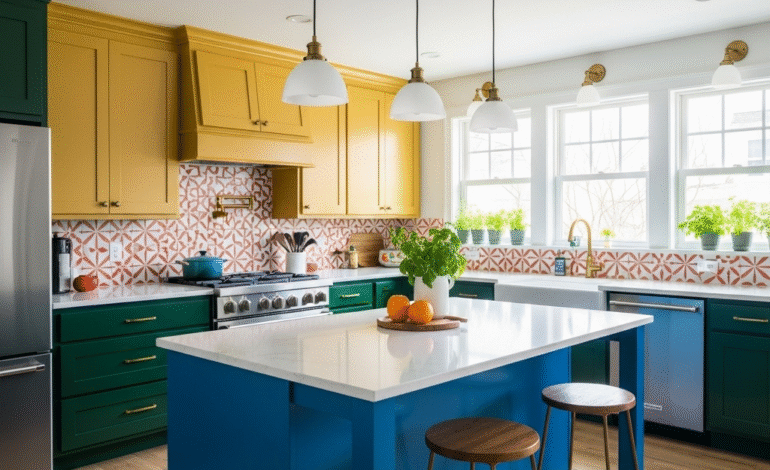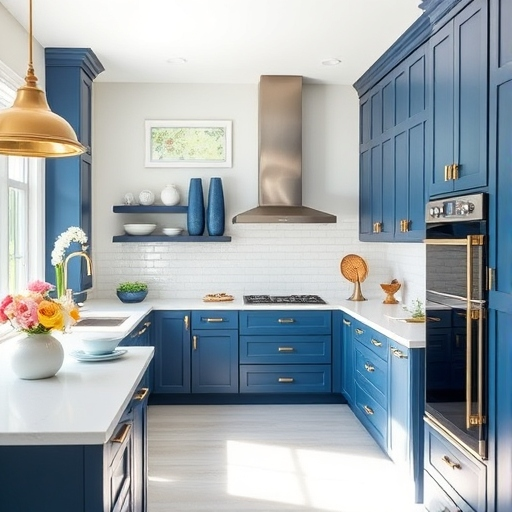
Mastering Chef Kitchen Decor: Trends, Tips & Inspiration

Introduction
I remember the first time I stepped into my grandmother’s kitchen, drawn by the rich aromas of simmering mole and freshly baked conchas. My abuela had transformed her small eat-in nook into a miniature chef’s station, complete with neatly hung copper pots, open shelves brimming with spice jars, and a solid marble countertop that she polished every morning. In that warm, bustling space, I realized how the right Chef Kitchen Decor could inspire creativity and efficiency at every turn. As I began renovating my own home kitchen, I sought to replicate that blend of functionality and beauty. In this article, I share lessons learned—backed by design theory and practical experience—to help you create a professional-grade culinary haven in your own home.
Color Psychology in Chef Kitchens
Choosing the right palette for a chef’s kitchen goes beyond mere aesthetics: it can affect mood, appetite, and productivity. In my journey, I experimented with two primary strategies:
- Neutrals with Bold Accent Walls
I painted most walls a serene dove gray, then introduced a deep navy feature wall behind my range. This contrast offered visual rest while emphasizing the cooking zone. White upper cabinets kept the space bright, and a splash of red on bar stools added just enough energy. - Monochromatic Schemes
For a sleek, minimalist approach, I also tried an all-white palette punctuated by stainless-steel appliances and chrome fixtures. The uniform hue made the room feel larger and more hygienic—an ideal backdrop for photo-worthy plating.
Color can influence your workflow. Cooler tones like gray and white encourage focus and calm, while strategic pops of red or yellow can invigorate. When selecting paints, opt for washable, low-VOC formulas to maintain both health and hygiene. By understanding color psychology in chef kitchens, you can design a space that not only looks stunning but also fuels creativity and efficiency.
Open Shelving: Stylish Storage for Chef Essentials
When I converted my pantry wall into open shelving, I hesitated—would it look messy? The answer surprised me: with thoughtful curation, it became a centerpiece. Here is how I achieved a balanced display:
- Group Items by Function
• Pots and pans on lower shelves
• Mason jars of spices in the middle
• Decorative bowls and cookbooks up high - Maintain Consistency
I stuck to white ceramic canisters, matching glass jars, and a cohesive color scheme for dishware. This uniformity prevented visual chaos. - Blend Practicality and Style
• Install under-shelf hooks for mugs and ladles
• Display a row of chef knives in a sleek wooden block
• Showcase copper sauté pans for a touch of warmth
Open shelving offers immediate access to cooking tools, encourages you to keep your essentials organized, and makes for an Instagram-ready backdrop. By following these kitchen storage solutions for chefs, you will create a stylish, efficient system where everything is within reach—and every item adds to your decor narrative.

Integrating Professional Equipment into Home Kitchens
I still recall the day I installed my first commercial-style range hood. The moment it roared to life, I felt transported to a restaurant kitchen. Integrating professional gear requires careful planning:
- Assess Your Ventilation Needs
A high-powered hood must be matched with adequate ductwork. I consulted an HVAC specialist to avoid whistling fans and poor air quality. - Balance Scale and Style
Commercial-grade ranges are often bulkier. I offset the size by pairing a six-burner stove with slimline cabinetry and a custom stainless-steel backsplash that ties the look together. - Consider Multi-Function Appliances
My dual-fuel range offered both precision gas burners and a convection oven—ideal for both searing steak and baking delicate pastries.
Choosing the right equipment is the cornerstone of commercial kitchen equipment for home use. Professional tools elevate your cooking potential and become design focal points. With proper installation and integration, you can enjoy restaurant-level performance without sacrificing your kitchen’s overall aesthetic.

Lighting Design for Function and Ambiance
Lighting has the power to transform a workspace into an inviting stage. I learned this by layering different types of illumination:
- Task Lighting
I mounted adjustable LED strips under cabinets to ensure every prep area was well-lit. This eliminated shadows when chopping or kneading. - Ambient Lighting
Overhead recessed downlights offered general brightness. After experimenting, I installed dimmers to shift from bright cooking mode to cozy dining atmosphere. - Accent Lighting
To highlight my open shelves, I added warm-toned puck lights that showcased my copper pots and decorative items.
Key considerations for kitchen lighting for cooking spaces include color temperature (3500–4000K is ideal for a natural feel), CRI ratings above 90 for accurate color rendering, and layered controls. By combining task, ambient, and accent lights, you will achieve both efficiency and ambiance in your chef-inspired kitchen.
Durable Materials for High-Traffic Chef Kitchens
When designing a chef’s environment, durability is paramount. I experimented with multiple surface types:
- Countertops
Quartz proved nearly indestructible under daily chopping and spills. My quartz slabs resist staining, and their non-porous nature prevents bacterial growth. - Backsplashes
I chose stainless steel behind the range and high-gloss subway tile elsewhere—both wipe clean effortlessly. - Flooring
After trialing wood and tile samples, I settled on large-format porcelain tile with a slight texture. This slip-resistant surface stands up to spills and foot traffic while remaining comfortable underfoot.
Incorporating durable materials for high-traffic chef kitchens ensures longevity and hygiene. Prioritize easy-to-clean, scratch-resistant, and heat-tolerant finishes when selecting surfaces, so your kitchen stays pristine through heavy use.
Eco-Friendly Chef Kitchen Ideas
My quest to reduce waste led me to rethink every facet of my kitchen:
- Sustainable Materials
I installed reclaimed oak shelves, bamboo drawer organizers, and countertops made from recycled glass. - Energy-Efficient Appliances
My induction cooktop uses 90% of its energy for cooking, compared to 55% for traditional electric ranges. - Zero-Waste Practices
I keep a compost bin beneath the sink and repurpose glass jars for bulk herbs and grains.
By embracing sustainable kitchen design for chefs, you not only decrease your environmental footprint but also craft a mindful cooking space. Renewable materials, energy-efficient technology, and waste-reduction systems can seamlessly integrate into your chef-grade kitchen without compromising style.
Multi-Functional Furniture for Compact Chef Spaces
Living in a city apartment taught me to do more with less. I outfitted my small kitchen with multi-use pieces:
- Drop-Leaf Tables
This fold-down solution offers ample prep space when open and tucks away when not in use. - Rolling Carts
A stainless-steel cart provides extra counter area, spice storage, and wine rack—all on casters for easy repositioning. - Built-In Bench Seating
Under-seat storage keeps bulky items hidden, while the bench doubles as informal dining.
These multi-functional furniture for compact chef spaces solutions maximize square footage and keep your kitchen uncluttered. When every inch counts, look for foldable, storable, and mobile furniture that adapts to your evolving needs.
Tech-Integrated Chef Kitchens
Smart technology has revolutionized my cooking routine:
- Voice-Activated Controls
I instruct my smart speaker to preheat the oven to 350°F while chopping vegetables. - App-Enabled Appliances
My refrigerator alerts me when I’m low on milk; I reorder with a tap on my phone. - Workflow Management
I use kitchen-specific apps to time multiple dishes, track pantry inventories, and scan recipes to create shopping lists.
By incorporating smart kitchen technology, you streamline tasks and free your mind for creativity. From app-controlled ovens to automated coffee machines, tech integration turns your chef kitchen into a modern command center.
Cultural Themes in Chef Kitchen Decor
Drawing on my heritage, I infused my kitchen with Mexican flair:
- Colorful Tile
Hand-painted Talavera tiles behind the range introduced vibrant reds and blues. - Open-Air Herb Rack
A hanging metal grid holds pots of cilantro, oregano, and epazote—fresh ingredients within arm’s reach. - Patterned Textiles
I draped a serape-striped runner across the island for an authentic touch.
Alternatively, you might prefer:
- Italian Bistro Style
Warm wood tones, wrought-iron accents, and vintage espresso machines. - Japanese Minimalism
Clean lines, natural woods, and simple earthenware serve both function and form.
Exploring cultural kitchen decor inspiration allows you to celebrate identity and create a kitchen that tells your story. Whether Mediterranean, Asian, or Latin American, each theme offers distinct color palettes, textures, and decorative motifs.
Maintenance Tips for Chef-Grade Kitchens
To keep my chef kitchen looking and performing its best, I follow a strict regimen:
Daily Rituals
- Wipe down counters with a mild, pH-neutral cleaner
- Sweep floors to remove crumbs and debris
Weekly Tasks
- Deep-clean stainless-steel surfaces with dedicated polish
- Empty and sanitize the inside of the fridge
Monthly Chores
- Descale faucets and the coffee machine
- Check seals on appliances and tighten loose hardware
By scheduling these maintenance tips for Chef Kitchen Decor, you prevent wear and tear, safeguard your investment, and maintain a hygienic environment. Consistency is key: a little upkeep today saves extensive repairs tomorrow.
FAQ
Q1: What are the essential elements of a chef-inspired kitchen?
A1: Key elements include professional-grade appliances, ample storage, durable surfaces, task lighting, and a clutter-free layout optimized for workflow.
Q2: How can I update my kitchen to look like a chef’s workspace?
A2: Add open shelving for tools, install a statement range hood, use commercial-style faucets, and incorporate bold metallic accents.
Q3: What materials are best for a chef’s kitchen?
A3: Stainless steel (easy to clean), quartz or granite countertops, and slip-resistant flooring like textured tile or rubber.
Q4: What colors make a kitchen feel chef-ready?
A4: Neutral bases (white, gray) with pops of bold hues (deep red, navy) or monochromatic schemes for a sleek, professional vibe.
Q5: How do I balance aesthetics and functionality?
A5: Prioritize ergonomic layouts, then layer in décor like framed recipe cards, hanging pots, or a vibrant backsplash.
Q6: Are open kitchens good for chefs?
A6: Yes, but use design barriers (e.g., breakfast bars) to manage visibility and noise while maintaining an open feel.
Q7: What’s the trend in chef kitchen decor for 2024?
A7: Matte black fixtures, smart tech integration, and biophilic design (natural elements like live green walls).
Q8: How to decorate a small chef kitchen?
A8: Use vertical space, stick to a minimalist color palette, and invest in multi-functional furniture (e.g., foldable tables).
Q9: Where to buy chef kitchen decor items?
A9: Brands like All-Clad, Williams Sonoma, IKEA (for budget picks), and Etsy for custom artisan décor.
Q10: How to keep a chef kitchen eco-friendly?
A10: Install energy-efficient appliances, use compost bins, and opt for sustainable materials like reclaimed wood or bamboo.
Conclusion
Designing a Chef Kitchen Decor scheme is an exercise in balance—blending professional functionality with personal style. From the color on your walls to the finishes beneath your feet, every choice influences your workflow, inspiration, and the joy you find in each meal you prepare. Drawing from family memories, cultural motifs, and the latest design trends, you can craft a space that is as efficient as it is beautiful. Whether you are a seasoned home chef or an enthusiastic beginner, let these insights guide you in creating a kitchen that feels like an extension of your passion for cooking—a true culinary sanctuary.
Disclaimer: This article is for informational purposes only and does not substitute for professional design advice. Always consult qualified professionals when planning major renovations.





